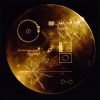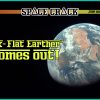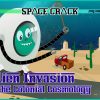 In an era where seemingly unquestionable scientific narratives dominate our perception of reality, a presentation has emerged that challenges the core tenets of colonial cosmology, a discourse embedded in our understanding since childhood.
In an era where seemingly unquestionable scientific narratives dominate our perception of reality, a presentation has emerged that challenges the core tenets of colonial cosmology, a discourse embedded in our understanding since childhood.
The essence of this captivating video questions the very foundations of our beliefs – from the floating and spinning supersonic space globe to the concept of celestial spheres adrift in the cosmic expanse.
Amidst the discourse on celestial spheres and flying balls, this presentation stands as a call to engage with intellectual courage. Taboo Conspiracy, also known as John, a Juris Doctor from Utah, invites viewers to test the idea that the Earth, allegedly a floating sphere, has a geometric curvature at moves at different directions at the same time.
Without attempting to sway opinion or compel action, the video stands as an invitation to engage in intellectual exploration and thoughtful reflection. Prepare to reevaluate your cosmological assumptions, embrace the journey of questioning, and venture into the realm of uncharted understanding.
At the outset of his presentation, John welcomes his audience and establishes the context as a continuation of his previous video titled “How a Pilot Ended the Globe.” He advises viewers to watch the earlier video for a comprehensive understanding of the subject matter.
John asserts that the crux of his argument revolves around the necessity for airplanes to dip their noses to account for Earth’s curvature. He underscores the critical nature of this adjustment, highlighting that failing to make it would lead to perilous altitude gain.
He acknowledges the diverse explanations presented by proponents of the globe theory regarding how airplanes compensate for Earth’s curvature. Despite his lack of concern for their beliefs, he emphasizes that they cannot disregard the inescapable truth that a downward nose adjustment is an imperative.
 Moving forward, John elucidates that the downward pitch of the nose, necessitated by the purported curvature of the Earth, should manifest in the stars’ rising perspective for pilots and passengers. He argues that if the stars fail to exhibit this upward movement, the implication is that there is no curvature adjustment, effectively refuting the concept of a spherical Earth.
Moving forward, John elucidates that the downward pitch of the nose, necessitated by the purported curvature of the Earth, should manifest in the stars’ rising perspective for pilots and passengers. He argues that if the stars fail to exhibit this upward movement, the implication is that there is no curvature adjustment, effectively refuting the concept of a spherical Earth.
John transitions to his analysis of a time-lapse video from a flight between Zurich, Switzerland, and São Paulo, Brazil. He emphasizes that the flight’s southwest direction should lead to a conspicuous upward movement of stars if Earth’s curvature adjustment is real. However, he reveals that the pilot’s time-lapse video showcases no such upward movement, negating the need for curvature adjustment on a globe.
John introduces a counter-argument raised by globe proponents, who suggest that Earth’s rotation cancels out the upward star movement. John explains this notion using hypothetical scenarios of flights at different directions and velocities. He debunks the “canceling out” claim by demonstrating that such an explanation contradicts the observable data and logic.
John scrutinizes the idea that the airplane’s southwest flight and the Earth’s rotation offset each other’s effects on star movement. He argues that this proposition falters when considering the actual flight direction and Earth’s rotation speed, highlighting the incongruence between theory and reality.
Further into his presentation, John posits a compelling dilemma for globe proponents. If the globe’s rotation offset the jet’s southwest flight, then a northeast-bound flight should exhibit doubled upward star movement. He dismisses the notion that Earth’s rotation can vary for different flights and sets up the expectation for evidence of this phenomenon.
The presenter credits a commenter named Kevin Samuel for sharing a link to a pilot’s video from the channel “Best Airplane Seat.” This pilot inadvertently captured crucial evidence by filming a time-lapse while flying northeast. John expresses gratitude to this pilot for contributing to the discourse.
John transitions to discussing another time-lapse video, this time covering the route from Lisbon, Portugal, to São Paulo, Brazil. He underscores that this video, covering nearly 4,900 miles, offers a substantial opportunity to observe curvature adjustment. He contrasts the anticipated star movement on a globe with the actual lack of upward star movement in the video.
He lauds the pilot’s inadvertent debunking of the globe theory, even though the pilot’s intention was unrelated to the flat Earth debate. John acknowledges the potential for a counter-argument related to Earth’s rotation canceling out the curvature adjustment. He asserts that the pilot’s video serves as evidence against this claim.
John analyzes segments of the pilot’s video to illustrate how the star movement contradicts curvature adjustment. He focuses on regions with identifiable landmarks, such as the Cape Verde Islands and the Canary Islands, and compares the observed star movement to what would be expected on a globe.
In the closing segment of his presentation, John summarizes his findings. He reiterates that the upward movement of stars should have occurred if curvature adjustment were true, but the evidence contradicts this notion. He emphasizes that multiple sources, including laser tests, provide compelling evidence of the Earth’s flatness, given the absence of measurable curvature over long distances.










